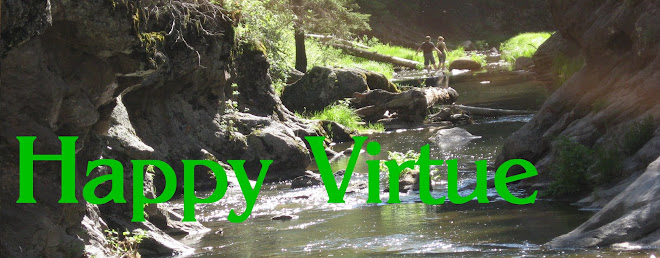I have been stargazing. Last Wednesday night was clear and there was no moon. So I amused myself by consulting the National Audubon Society Field Guide to the Night Sky, and finding ten constellations.
I began with Boötes, for the chart on page 42 said it should be at the zenith. Indeed it was, sparkling away merrily. It looks a trifle like an ice cream cone, with Arcturus being bright at the point. Boötes is the Herdsman; some say he herds the Great Bear, who is his mother, Callisto. Zeus was up to his normal shenanigans, and Hera, in her usual unhelpful way, took it out on the girl: in this instance, Callisto. Others say Boötes is the son of Ceres, the crop goddess, and that he was put in the stars for inventing the plow. Others say the bright Arcturus is the Guardian of the North—arktos, arctic. The Chinese saw Arcturus as a horn of a great dragon chasing a pearl, the moon. Apparently, to this day Chinese New Year is illustrated with dragons and pearls.
The Big Dipper was right where it should have been, but somehow the Little Dipper went missing. I consulted the sky, the book, the sky, the book again, and finally discovered it lurking, its low magnitude almost blending into the background dark. Polaris, the North Star itself, is much more low-key than such an important star has any right to be.
Then I tried to find the Corona Borealis. It was charmingly prominent, charmingly crownlike. The NASFGTTNS said it has been associated with pretty much every crown ever, but it’s primarily the Crown of Ariadne. She, if you’re not familiar with the story, is the beautiful and brave daughter of King Minos of Crete. Every year he demanded a tribute of seven youths and seven maids from Greece, which he promptly fed to the Minotaur he kept in his basement—er, labyrinth, under his palace. One year, Prince Theseus of Athens volunteered to go for the tribute. Ariadne took pity on him and gave him a ball of string so he could find his way out of the labyrinth. He smuggled in a sword, killed the Minotaur, and escaped with his life and the princess. However, he immediately showed himself a villain of the foulest sort by abandoning her on Naxos to the gods. In one story, Dionysius fell in love with her, but she didn’t believe he was a god and didn’t like him anyway (sensible girl!), so he lost his temper and threw a crown into the sky to prove his deity.
Hercules, the constellation immediately below the Corona and Boötes, tried to hide, but I eventually found him. There’s a horizontal swoopy, with two stars underneath in the middle making a box, and a jig going to the lower left from one box corner and a jog going out from the other corner.
Bright little Lyra was right under Hercules. It’s a shapeless blob, primarily remarkable for the star Vega.
And Cygnus is right under Lyra. It does in fact look cross-shaped; its main stair is named Deneb.
I also found Draco. I’ve been looking for him for a long time. To find him, first you have to find both dippers and then, while holding onto their locations, find Boötes, Corona Borealis, and Hercules. Draco is in the middle. He snakes between the dippers, loops down and back up, and its head is a quadrilateral right next to Hercules.
Then it occurred to me that there was more to Ursa Major than just the dipper. (I’m seeing a slogan…) So I found it. Ursa Major is supposed to be the Bear Callisto was turned into, but in my opinion it looks more like a rocket with three legs and a tail.
Down between the two hind feet I found what must have been Leo Minor—all three stars of it.
Then I was reading Dante, and he talked about most of these stars I just found! So I append it. :-)
Let him imagine who would fully grasp
What then I saw—and while I speak hold tight,
Like a firm rock, that image in his clasp—
The fifteen stars[1] that here and there so bright
Enkindle heaven that of their rays take toll
No densest vapours in the air of night;
Imagine that true Wain[2], content to roll
Through our own skies, that so, by eve or morn,
The plough lacks never to its turning pole;
Imagine, too, the bell-mouth of the horn [3]
Whose point springs from the axle’s tip on high
Round which the Primum Mobile is borne;
That all these stars have formed upon the sky
Two signs like that which Minos’ daughter traced [4]
When the chill took her and she came to die;
That like a ring within a ring embraced
They shine, and both together make rotation,
Each in its pacing by the other paced;
He’ll get some shadow of the constellation
And double dance that really circled so
About the spot whereon I kept my station….
Paradiso, Sayers’ translation, Canto 13, 1-21
[1] According to Sayers, these were the fifteen stars of the first magnitude visible in his time: Sirius (in Canis Major), Capra (in Auriga), Arcturus (in Bootes), Vega (in Lyra), Rigel (in Orion), Procion (in Canis Minor), Bethelgeuse (in Orion), Altair (in Aquila), Aldebaran (in Taurus), Spica (in Virgo), Antares (in Scorpio), Pollux (in Gemini), Regulus (in Leo), Fomalhaut (in Piscis australis), and Deneb (in Cygnus).
[2] Ursa Major
[3] Ursa Minor
[4] Corona Borealis
Monday, June 06, 2005
Subscribe to:
Post Comments (Atom)



No comments:
Post a Comment